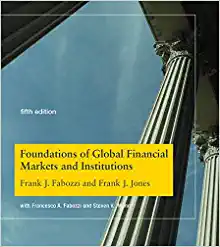Question
When analyzing large public goods problems, you compute an efficiency ratio by dividing the probability of providing the public good by the probability that it
When analyzing large public goods problems, you compute an "efficiency ratio" by dividing the probability of providing the public good by the probability that it is efficient to provide the good. This question asks you to repeat that analysis, but assuming that the cost of providing the public good is always 1 (not 1 per person, but 1 total).
(a) What is the efficiency ratio for n = 2?
(b) What does the efficiency ratio tend to as n gets very large? (Hint1: you may use the following fact. The probability that the sum of all n valuations is less than 1 is 1/n!. Hint2: you may need to look up the limit of (1 1/n)n)
(c) Is the case of n = 2 better or worse than the case of very large n? What is your intuition for why this is the case?
Step by Step Solution
There are 3 Steps involved in it
Step: 1

Get Instant Access to Expert-Tailored Solutions
See step-by-step solutions with expert insights and AI powered tools for academic success
Step: 2

Step: 3

Ace Your Homework with AI
Get the answers you need in no time with our AI-driven, step-by-step assistance
Get Started


